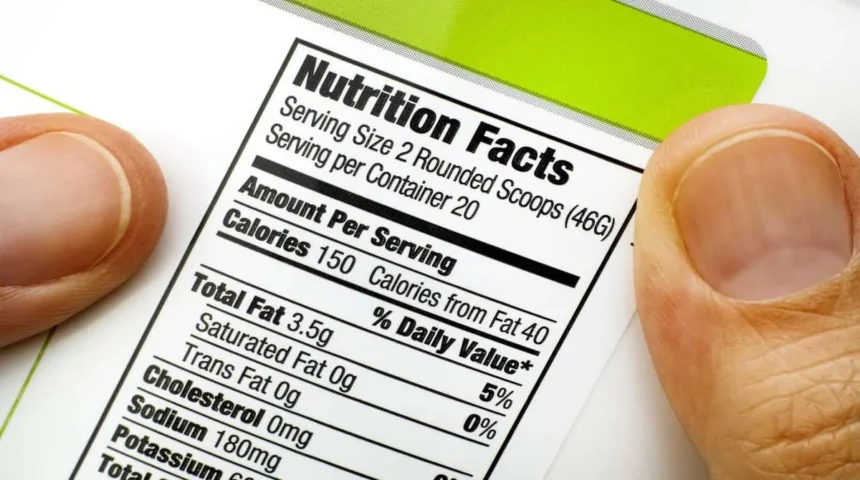Reading food labels has become very important in India because packaged foods are now a part of almost every kitchen. Many snacks, drinks, and even foods that appear healthy often contain hidden sugars. These sugars can quietly increase your daily sugar intake and affect your long-term health.
The good news is that you do not need to be a nutrition expert to understand labels. With simple steps, you can learn to read food labels smartly and spot hidden sugars quickly. This guide will help you understand labels used in India, decode tricky ingredient names, and avoid sugar traps.
For more health tips like this, you can explore other guides at healthguiders.com.
Why Reading Food Labels Matters in India
India is witnessing a rise in lifestyle diseases such as obesity, diabetes, and heart problems. One major reason is excessive consumption of added sugar. Most people do not realise how much sugar they consume each day because it is hidden under different names on labels.
By understanding food labels, you gain full control over your food choices. You can compare products easily, avoid unnecessary sugar, protect your family’s health, and make informed decisions.
Understanding the Indian Nutrition Facts Label
Before spotting hidden sugars, it is important to understand the basic parts of the Nutrition Facts Table that appears on packaged foods.
Serving size
Always check the serving size first. Many packets contain more than one serving. If you finish the whole pack, you must multiply the calories and other nutrients accordingly.
Calories per serving
Calories show how much energy the food provides. High calories with low nutrition usually mean the food should be eaten less often. Use this information to compare similar products.
Total carbohydrates and sugars
Under total carbohydrates, you will see sugars listed. But this number may include both natural and added sugars. That is why you should never depend only on the sugar number. You must also check the ingredient list to find hidden sources.
How to Spot Hidden Sugars in Indian Food Labels
Sugar can appear in many forms, and brands often use different names to make the product seem healthier. Once you know these names, identifying added sugar becomes easy.
Look at the ingredient list carefully
Ingredients are listed from the highest quantity to the lowest. If sugar or any sugar-related ingredient appears in the first three items, the product has a high sugar content.
Common names for sugar used in India
Sugar can hide under many names. Some of the most common ones include:
Sugar
Jaggery
Honey
Corn syrup
High-fructose corn syrup
Liquid glucose
Dextrose
Fructose
Maltose
Sucrose
Caramel
Brown sugar
Malt extract
Rice syrup
Fruit concentrate
Fruit concentrate is one of the most misleading. Many juice packs claim “no added sugar” but use concentrate, which is higher in sugar than actual fruit.
“Healthy-sounding” sugars can still be harmful
Natural sugars like jaggery, honey, coconut sugar, or date syrup still act like normal sugar inside your body. Even if they contain some minerals, they should be eaten in moderation.
Watch out for sugar alcohols
Sugar alcohols are used as substitutes for sugar. They include sorbitol, mannitol, xylitol, and maltitol. While they do not spike blood sugar as quickly, they can cause digestion issues if eaten too much.
Understanding Common Nutrition Claims on Packaging
Many products add catchy health claims on the front, but these claims can sometimes be misleading. Knowing how to decode them keeps you safe from sugar traps.
“No added sugar”
This does not mean the product is sugar-free. It may still contain sugar from fruit concentrate or natural sweeteners.
“Low fat” or “Zero fat”
When fat is removed, companies often add sugar to improve taste. Many low-fat biscuits and yogurts contain more sugar than regular versions.
“Made with whole grains”
Even whole grain products like biscuits or cereals may contain a large amount of sugar. Always read the full ingredient list.
“High fiber”
High fiber does not guarantee low sugar. Some high-fiber snacks still contain added sugars for flavour.
How Much Sugar Is Safe to Eat Per Day
Most adults should not consume more than 24 grams (about 6 teaspoons) of added sugar per day. Children should consume even less. Hidden sugars in packaged foods can make you cross this limit easily.
For example:
A small juice box may contain 18–22 grams of sugar.
Flavoured yogurt may contain 12–15 grams.
Breakfast cereals may contain 8–12 grams per serving.
This is why reading labels is an important habit for every household.
Simple Tips to Reduce Hidden Sugar Intake
Small changes in your daily routine can help reduce sugar without making your diet complicated.
Choose unsweetened versions
Pick unsweetened milk, yogurt, cereals, oats, and peanut butter. You can add your own natural sweetness if needed.
Prefer whole foods over processed foods
Fresh fruits, vegetables, nuts, and homemade meals naturally contain less sugar and more nutrition.
Compare brands before buying
Different brands of the same product may have different sugar levels. Check and pick the better option.
Reduce sugary drinks
Soft drinks, packaged juices, flavoured lassis, iced teas, and energy drinks contain large amounts of hidden sugar. Choose water, coconut water, or homemade drinks instead.
Why Children Should Learn Label Reading Early
Kids today are surrounded by colourful packaged snacks. Teaching them to read labels early helps them understand what they are eating and encourages them to choose healthier snacks. This habit protects them from consuming too much sugar, especially from chocolates, candies, soft drinks, and ready-made snacks.
Conclusion
Learning how to read food labels smartly in India is one of the simplest ways to improve your everyday health. Once you know how to spot hidden sugars in ingredient lists, you can protect yourself and your family from excessive sugar intake. Practice reading labels every time you buy something new. Soon, making healthier choices will become effortless.
For more simple and practical health tips, explore helpful guides at healthguiders.com and continue your journey to better wellness.
FAQs
How can I quickly tell if a product contains hidden sugar?
Check the first three ingredients. If sugar or any sugar substitute appears early in the list, the product contains added sugar.
Are natural sweeteners like jaggery better than white sugar?
They may have some minerals, but they are still sugar. Your body processes them almost the same way.
Are “no added sugar” juices healthy?
Not always. Many contain fruit concentrates, which are high in natural sugar.
What is considered a high-sugar product?
Anything with more than 10 grams of sugar per serving is generally considered high.
Should diabetics focus on food labels?
Yes. Labels help them avoid hidden sugars and manage blood sugar levels.




